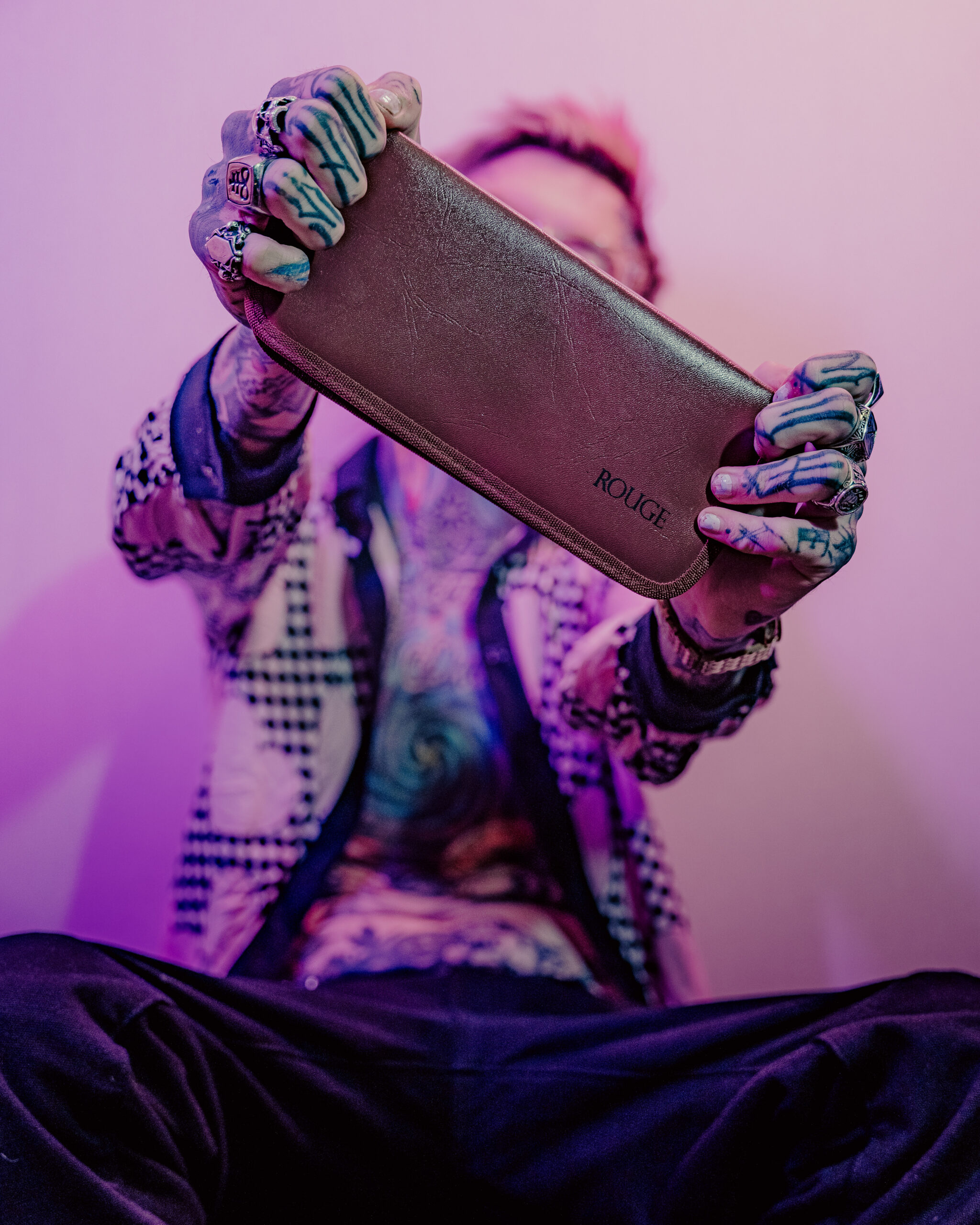Understanding Demigirl
Demigirl and demiboy are gender identities that fall under the broader umbrella of non-binary gender identities. They represent individuals who partially identify with a particular gender while also feeling disconnected from it to some extent. Understanding these terms is crucial for fostering inclusivity and respecting the diverse ways people experience and express their gender.
Definition of Demigirl
Demigirl and demiboy are gender identities that describe individuals who partially identify with one specific gender, but not fully.
They encompass a spectrum of experiences, each person’s understanding and expression of their identity unique to them.
- A demigirl may identify as partially female, experiencing some aspects of womanhood while also feeling disconnected from it. This could involve identifying with certain feminine traits, expressions, or social roles but not fully embracing the entirety of womanhood.
- Similarly, a demiboy might partially identify as male, experiencing some aspects of manhood while also feeling detached from it. This could mean relating to masculine traits or expressions to some degree, but not entirely aligning with traditional notions of masculinity.
It’s important to remember that these are personal experiences, and individuals may express their demigirl or demiboy identities in diverse ways.
Characteristics and Experiences of Demigirls
Demigirl is a gender identity used by people who partially identify as female. Demigirls may feel some connection to femininity, but not fully identify as women. This could involve identifying with some feminine traits, expressions, or social roles, but not fully embracing the entirety of womanhood.
Experiences of being demigirl are diverse and unique to each individual. Some demigirls may express their identity through clothing, hairstyles, or mannerisms that align with femininity, while others may choose to express it differently.
It’s important to remember that demigirls, like all individuals, should be respected for their self-identified gender.
Expression and Identity
Demigirl and demiboy are gender identities that describe individuals who partially identify with one specific gender, but not fully. They encompass a spectrum of experiences, each person’s understanding and expression of their identity unique to them.
A demigirl may identify as partially female, experiencing some aspects of womanhood while also feeling disconnected from it. This could involve identifying with certain feminine traits, expressions, or social roles but not fully embracing the entirety of womanhood. Similarly, a demiboy might partially identify as male, experiencing some aspects of manhood while also feeling detached from it. This could mean relating to masculine traits or expressions to some degree, but not entirely aligning with traditional notions of masculinity.
It’s important to remember that these are personal experiences, and individuals may express their demigirl or demiboy identities in diverse ways. Some demigirls may express their identity through clothing, hairstyles, or mannerisms that align with femininity, while others may choose to express it differently.
Demigirls, like all individuals, should be respected for their self-identified gender.
Understanding Demiboy
Demigirl and demiboy are gender identities that describe individuals who partially identify with one specific gender but not fully. They encompass a spectrum of experiences, each person’s understanding and expression of their identity unique to them. A demigirl may identify as partially female, experiencing some aspects of womanhood while also feeling disconnected from it. Similarly, a demiboy might partially identify as male, experiencing some aspects of manhood while also feeling detached from it.
Definition of Demiboy
Demigirl and demiboy are gender identities that describe individuals who partially identify with one specific gender but not fully. They encompass a spectrum of experiences, each person’s understanding and expression of their identity unique to them. A demigirl may identify as partially female, experiencing some aspects of womanhood while also feeling disconnected from it.
Similarly, a demiboy might partially identify as male, experiencing some aspects of manhood while also feeling detached from it. It’s important to remember that these are personal experiences, and individuals may express their demigirl or demiboy identities in diverse ways.
Characteristics and Experiences of Demiboys
Demigirl and demiboy are gender identities that fall under the broader umbrella of non-binary gender identities. These terms describe individuals who partially identify with a specific gender while also feeling disconnected from it to some extent.
A demigirl might identify as partially female, experiencing certain aspects of womanhood but not fully embracing it. This could involve relating to feminine traits, expressions, or social roles but not identifying as fully female. Similarly, a demiboy might partially identify as male, experiencing some aspects of manhood while also feeling detached from it. This could mean relating to masculine traits or expressions to some degree but not aligning fully with traditional notions of masculinity.
It’s important to remember that demigirl and demiboy are personal experiences, and individuals may express their identities in diverse ways. Some people might express their identity through clothing, hairstyles, or mannerisms, while others might choose different forms of expression.
Respecting how individuals identify and express their gender is crucial for fostering inclusivity and understanding.
Expression and Identity
Demigirl and demiboy are gender identities that fall under the broader umbrella of non-binary gender identities. These terms describe individuals who partially identify with a specific gender while also feeling disconnected from it to some extent.
A demigirl might identify as partially female, experiencing certain aspects of womanhood but not fully embracing it. This could involve relating to feminine traits, expressions, or social roles but not identifying as fully female. Similarly, a demiboy might partially identify as male, experiencing some aspects of manhood while also feeling detached from it. This could mean relating to masculine traits or expressions to some degree but not aligning fully with traditional notions of masculinity.
Understanding these identities is important for creating a more inclusive and accepting environment. It’s crucial to remember that individuals may express their demigirl or demiboy identities in diverse ways, and respecting how people identify and express their gender is essential.
Intersections with Other Identities

Demigirl and demiboy are gender identities that fall under the broader umbrella of non-binary gender identities. These terms describe individuals who partially identify with a specific gender while also feeling disconnected from it to some extent.
Genderfluid Individuals
Intersections with other identities are crucial when understanding the experiences of demigirl and demiboy individuals. Gender identity is complex and often intersects with other aspects of an individual’s identity, such as race, ethnicity, sexual orientation, disability, and socioeconomic status.
For example, a demigirl person of color may face unique challenges due to the intersection of their gender identity and racial experiences. They might encounter discrimination based on both their gender and their race, leading to compounded feelings of marginalization and exclusion. Similarly, a demiboy individual with a disability may experience barriers related to accessibility and societal perceptions of gender and disability.
Recognizing these intersections is essential for promoting inclusivity and creating a more equitable society where individuals from all backgrounds can feel seen, heard, and respected.

Nonbinary Individuals
Understanding the intersections of identity with demigirl and demiboy experiences is crucial. Gender identity is interconnected with other aspects of a person’s being, including race, ethnicity, sexual orientation, disability, and socioeconomic status.
For instance, a demigirl person of color might face challenges stemming from the convergence of their gender identity and racial background. They could encounter discrimination rooted in both their gender and race, leading to a heightened sense of marginalization.
A demiboy individual with a disability might experience barriers related to accessibility and societal perceptions of gender and disability.
Recognizing these intersections is vital for fostering inclusivity and building a more equitable society where individuals from diverse backgrounds feel seen, heard, and respected.
Transgender Individuals
Understanding the intersections of identity with demigirl and demiboy experiences is crucial. Gender identity is interconnected with other aspects of a person’s being, including race, ethnicity, sexual orientation, disability, and socioeconomic status.
For instance, a demigirl person of color might face challenges stemming from the convergence of their gender identity and racial background. They could encounter discrimination rooted in both their gender and race, leading to a heightened sense of marginalization.
A demiboy individual with a disability might experience barriers related to accessibility and societal perceptions of gender and disability.
Recognizing these intersections is vital for fostering inclusivity and building a more equitable society where individuals from diverse backgrounds feel seen, heard, and respected.
Acceptance and Support
Demigirl and demiboy are terms that describe individuals who partially identify with one specific gender but not fully. These identities fall under the broader umbrella of non-binary gender identities, encompassing a spectrum of experiences unique to each person.
Creating Inclusive Environments
Creating inclusive environments means recognizing and respecting the diversity of human experience, including gender identity. Understanding terms like demigirl and demiboy is crucial for fostering acceptance and ensuring everyone feels safe and valued.
When interacting with individuals who identify as demigirl or demiboy, it’s important to approach them with respect and use their preferred pronouns. Avoiding assumptions about someone’s gender based on their appearance or expression is essential.
Education plays a vital role in creating inclusive environments. Providing resources and information about diverse gender identities helps challenge stereotypes and promote understanding.
Encouraging open and honest conversations about gender identity creates space for individuals to share their experiences and perspectives. This can lead to greater empathy and a more inclusive community.
Respecting Pronouns and Names
Demigirl and demiboy are gender identities that fall under the broader umbrella of non-binary gender identities. These terms describe individuals who partially identify with one specific gender while also feeling disconnected from it to some extent.
Understanding these identities is crucial for fostering inclusivity and respecting the diverse ways people experience and express their gender.
- A demigirl may identify as partially female, experiencing some aspects of womanhood while also feeling disconnected from it. This could involve identifying with certain feminine traits, expressions, or social roles but not fully embracing the entirety of womanhood.
- Similarly, a demiboy might partially identify as male, experiencing some aspects of manhood while also feeling detached from it. This could mean relating to masculine traits or expressions to some degree, but not entirely aligning with traditional notions of masculinity.

It’s important to remember that these are personal experiences, and individuals may express their demigirl or demiboy identities in diverse ways.
Educating Others About Gender Identity
Demigirl and demiboy are gender identities that describe individuals who partially identify with one specific gender but not fully. These terms fall under the broader umbrella of non-binary gender identities, encompassing a spectrum of experiences unique to each person. Understanding these identities is crucial for fostering inclusivity and respecting the diverse ways people experience and express their gender.
A demigirl may identify as partially female, experiencing some aspects of womanhood while also feeling disconnected from it. This could involve identifying with certain feminine traits, expressions, or social roles but not fully embracing the entirety of womanhood. Similarly, a demiboy might partially identify as male, experiencing some aspects of manhood while also feeling detached from it. This could mean relating to masculine traits or expressions to some degree, but not entirely aligning with traditional notions of masculinity.
It’s important to remember that these are personal experiences, and individuals may express their demigirl or demiboy identities in diverse ways. Some people might express their identity through clothing, hairstyles, or mannerisms, while others might choose different forms of expression. Respecting how individuals identify and express their gender is essential.
#SexyHalloween @trixieblueburlesque! 🌑” frameborder=”0″ allow=”accelerometer; autoplay; clipboard-write; encrypted-media; gyroscope; picture-in-picture; web-share” referrerpolicy=”strict-origin-when-cross-origin” allowfullscreen>
Creating a more inclusive environment involves educating ourselves about diverse gender identities. Providing resources and information about demigirl and demiboy experiences helps challenge stereotypes and promotes understanding. Encouraging open conversations about gender identity allows individuals to share their experiences and perspectives, leading to greater empathy and a more inclusive community.
nipple suction
C4YL
Fearfully Fashioned
- Dermal Fillers Near Addington, Surrey - September 22, 2025
- Chin Crease Filler In Cheam, Surrey - September 20, 2025
- Cannabis Infused Cola: What It’s Really Like - September 19, 2025
